Monday, 12th December 2022
Policies, People & Climate: Hindustan Times
In News: The Roxburgh Project envisages restoring and sustainably rehabilitating an ensemble of heritage buildings in the 273-acre gardens and utilise the historic gardens as a lab for climate crisis awareness and environmental education.
India has a rich heritage that is a storehouse of archaeological assets and mind-blowing monuments. They represent a unique legacy of civilization and therefore the conservation of built heritage is generally perceived to be in the long-term interest of society.
But the majority of India’s architectural heritage and sites remain unidentified and largely unprotected, and even those that are protected are facing challenges related to climate change and unsustainable tourism practices. Therefore, the issues related to Indian Heritage must be carefully identified and solved in a comprehensive manner.
Heritage
The primary custodian of ‘Monuments and Sites’ in the country, i.e. Archeological Survey of India (ASI) and their counterparts protect them.
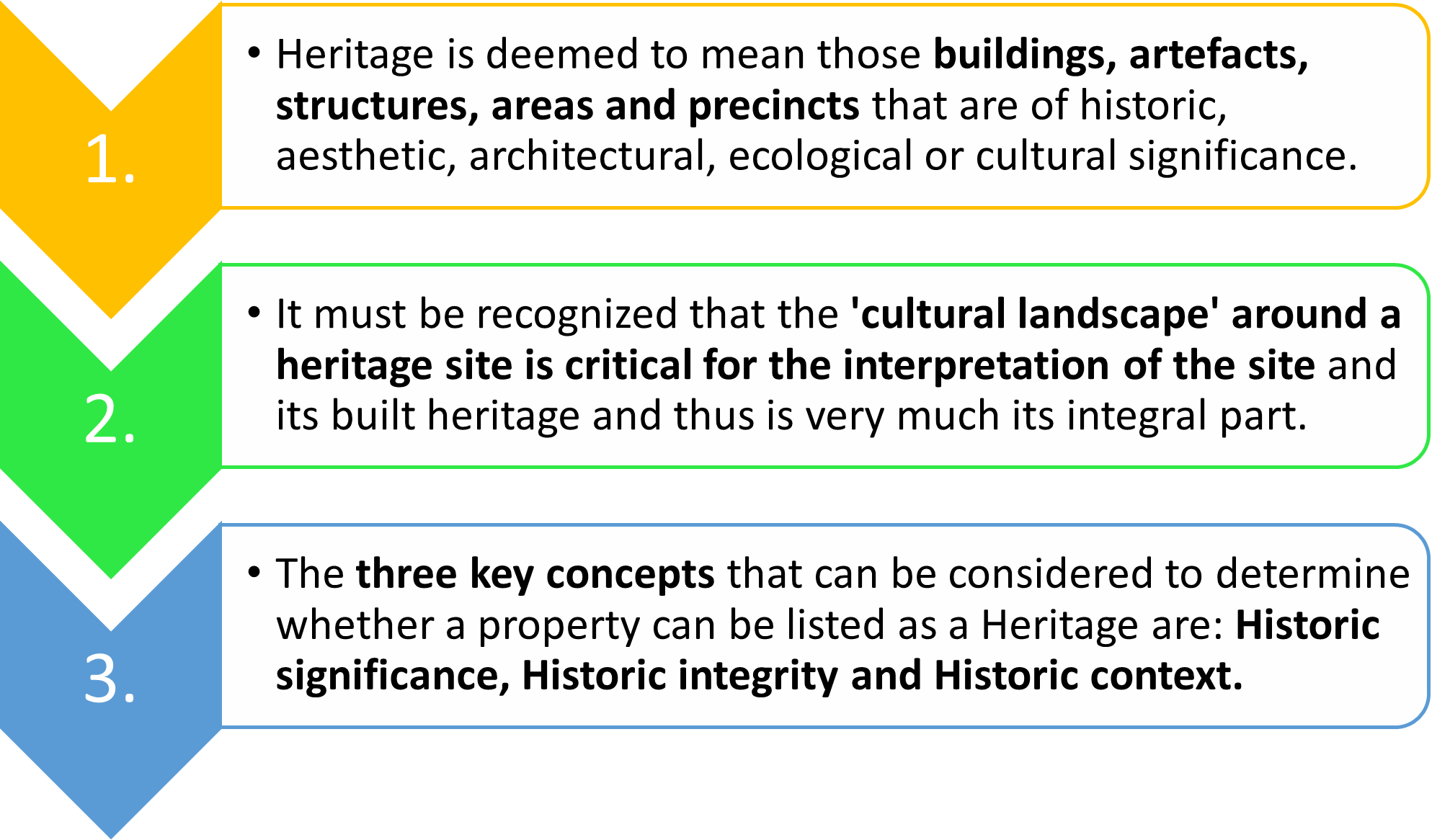
Role of India's Rich Heritage in Embracing its Cultural Identity
- Embracing Diversity: India heritage is itself a museum of different types, communities, customs, traditions, religions, cultures, beliefs, languages, castes and social systems.
- Tolerating Nature: Indian society gave every culture the opportunity of prospering that is reflected in its diverse heritage. It does not try to suppress diversity in favour of uniformity.
- Storytellers of Indian History: Heritage is a legacy of physical artefacts and intangible attributes through the generations that are inherited, preserved, and passed on. Heritage has been woven into the fabric of Indian society with spiritual, religious, social, and political significance.

Challenges Associated with Heritage Conservation
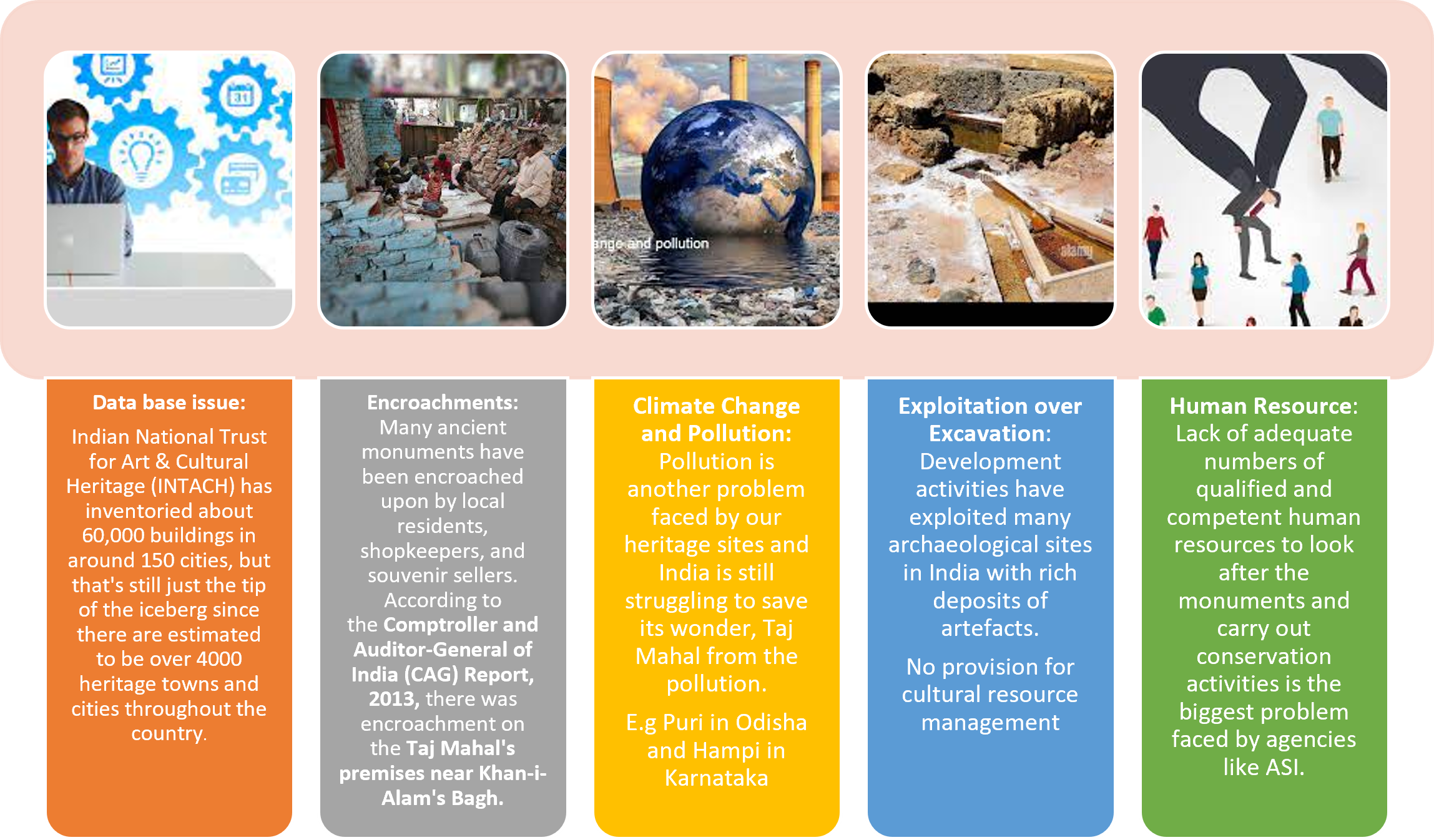

Way Forward
- Chanage required in Conservation Policy: In light of the changing scenarios with the advancement in technology, ASI needs to update its Excavation Policy. Using new technology such as Photogrammetry & 3D Laser Scanning, LiDAR and satellite remote sensing surveys should be used for documentation, surveys, excavation and conservation.
- Smart Heritage programme: It is necessary to consider the Heritage Impact Assessment for all large infrastructure projects. The Heritage Identification and Conservation Projects need to be adjoined to the city master plans and integrate with the Smart City Initiative.
- Increasing Engagement through innovation: The use of monuments that do not attract a large number of visitors and not have cultural/religious sensitivity can serve as venues for cultural and wedding programmes that can fulfil twin objectives: The promotion of the associated intangible heritage and Increasing visitor numbers to such sites.
- Corporate Responsibility: Companies should be encouraged to take on restoration and preservation of monuments as part of their Corporate Social Responsibility(CSR) obligations.
- Climate Action and Heritage Conservation: Heritage sites can serve as opportunities for climate communication and education, and research on historic sites and practices to understand past responses to changing climate conditions can help adaptation and mitigation planners develop strategies that integrate natural science and cultural heritage. For example, coastal and river communities such as the island of Majuli in India have been living with and adapting to changing water levels for centuries.
Ref: The Hindustan Times
Multi-State Co-op Act Amendment: Lok Sabha Bill
The Central Government recently introduced the Multi-State Cooperative Societies (Amendment) Bill, 2022 in Lok Sabha.
About the News
- Multi-state Cooperatives are entities spread across more than one state. Under the Multi State Cooperative Societies (MSCS) Act, 2002, the administrative and financial control of these societies is with the central registrar, while no state government official can wield any control on them.
- The MSCS Act was passed to govern such cooperatives whose members and areas of operation are spread across more than one state. At present, India has more than 1,500 multi-State cooperative
What are the objectives of the introducing this amendment?
- The Bill seeks to strengthen governance, reform the electoral process, improve the monitoring mechanism, and ensure ease of doing business in multi-State cooperative societies.
- It aims to improve the composition of boards and ensure financial discipline, besides enabling the raising of funds in the multi-State cooperative societies.
What are the key provisions of the amendment bill?
- Establishment of cooperative election authority: The Bill seeks to establish a “cooperative election authority” to bring “electoral reforms” in the cooperative sector.
- Appointment of Cooperative information officer: The bill proposes to make provisions for the “appointment of cooperative information officer” to provide information on affairs and management of the multi-state co-op society concerned to members of such society.
- Amalgamation of co-operative societies: The bill provides for the amalgamation and division of multi-state co-operative societies. This can be done by passing a resolution at a general assembly. The Bill allows co-operative societies (registered under state laws) to merge into an existing multi-state co-operative society.
- Establishment of a Fund & concurrent audit: The Bill seeks to insert a new Section related to the “establishment of the Cooperative Rehabilitation, Reconstruction and Development Fund” for revival of sick multi-state cooperative societies. It also proposes to insert Section relating to “concurrent audit” for such multi-state societies with an annual turnover or deposit of more than the amount as determined by the Centre.
- Redressal of complaints: It proposes to appoint one or more Co-operative Ombudsman with territorial jurisdiction to inquire into members’ complaints. The ombudsman will complete the process of inquiry and adjudicate within a period of three months from the date of receiving the complaint and may issue necessary directions to the society during the course of inquiry.
- Increase in Penalties: The government has also proposed to amend the existing Act to increase monetary penalties on multi-state co-op societies for violating provisions of the law to a maximum Rs 1 lakh.
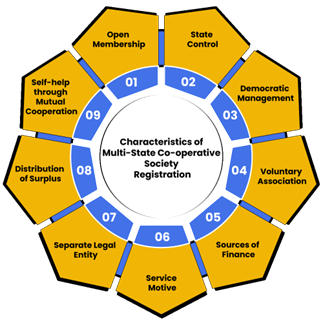
What are the concerns associated with the proposed bill?
- Since cooperatives are a state subject, the introduction of the clause concerning the merger through the Bill, encroaches on the state’s right and is against India’s federal structure.
- It is also being claimed that this is beyond the legislative competence of the Union as State cooperative societies are within the exclusive jurisdiction of States.
- No provision of the Constitution makes way for merging a cooperative society which is incorporated under State law with a Multi-State Cooperative Society.
- The bill may lead to the concentration of power of the Central government, which may impact the autonomy and functioning of the multi-State cooperative societies and create the potential for misuse.
- No reference to standing committees was made despite demands from opposition parties.

Source:
‘Clean Ganga’ changes course to conservation, tourism, livelihood
There has been a shift in the objectives of union government’s flagship Namami Gange programme. The program conceived to improve the sanitation levels in the Ganga River is now geared towards conservation, tourism and providing economic livelihoods.

About the News:
- In a meeting headed by Union Jal Sahkti Minister, to coordinate activities of the Namami Gange project, decisions were focused on developing a “comprehensive plan” for developing tourism circuits along the Ganga in line with “Arth Ganga,” organic farming and cultural activities.
- ‘Artha Ganga’ concept, first introduced by the Prime Minister in 2019, implies a sustainable development model with a focus on economic activities related to Ganga. Under Arth Ganga, the government is working on six verticals namely:
-
- Zero Budget Natural Farming,
- Monetization and Reuse of Sludge & Wastewater,
- Livelihood Generation Opportunities,
- Increase public participation
- Promote the cultural heritage and tourism of Ganga,
- Empowering local administration for improved water governance.
What are the steps taken to promote tourism, conservation and livelihood generation along Ganga?
- Tourism circuits are being created and the Ministry is planning exhibitions and fairs in 75 towns along the main stem of the river.
- Agriculture Ministry is taking steps to build organic farming and natural farming corridors. Several workshops and visits have been organized for farmers who were being “nudged and sensitized” to shift to ‘natural farming.’
- Urban affairs ministry is focused on mapping drains and solid waste management.
- Environment ministry is scaling up afforestation and conservation efforts to protect the Gangetic river dolphin.
- Power Ministry is working to reuse treated wastewater of thermal power
- Rural Development Ministry is looking to rejuvenate small rivers and protect traditional water bodies.
- States are focusing on expeditiously completing projects and every Ganga district is expected to develop a scientific plan and health card for at least 10 wetlands and adopt policies for reuse of treated water and other byproducts.

Source: News Article: The Hindu
Image Source: Press Release: PIB
Existing laws on religious conversions
Petitions filled in the Supreme court against religious conversions
About the News:
- The Supreme Court bench led by Justice M.R. Shah has recently heard a plea seeking a special law against forced conversions.
- There have been allegations that “mass conversions” of socially and economically underprivileged people are being carried out in major states of India in an organised manner.
- The court has observed that acts of charity or good work to help a community or the poor should not cloak an intention to religiously convert them as payback.
- The court has also sought clarification from the centre on steps done to curb religious conversions by means of force, allurement or fraud.
- Forced conversions often affects the security of the nation and freedom of religion and conscience of citizens.
- Previously, more than ten States have enacted laws prohibiting religious conversions affected through force, allurement, fraud, or marriage.
Religious conversions:
- About: Religion conversion is a practice where an Individual renounces his original religion and adapts to different religions and ideals.
- Legal status Religious conversion is a basic right in India and conversion of religion due to self-belief, divorce, marriage is completely legal in India.
- Need: No person shall directly or indirectly convert from one religion to another by misrepresentation, force, undue influence, coercion, allurement or by other fraudulent means or by marriage.
- Constitution:
- Article 15: As per constitution, an individual has the freedom to choose a particular religion.
- Article 25(1): All persons are equally entitled to the freedom of conscience and the right to profess, practise and propagate religion freely.
- Supreme Court verdicts:
- Arun Ghosh vs. State of West Bengal (1950): Any attempt to raise communal passions through forcible conversions would be considered a breach of public order, affecting the community at large and it was within the power of States to enact local Freedom of Religion laws.
- Stainislaus vs. State of Madhya Pradesh (1960): Article 25 does not grant the right to convert other persons to one’s own religion but to transmit or spread one’s religion by an exposition of its tenets.
- Puttaswamy judgement (2018): Every person was the final judge of their own choice of religion, and religious faith was a part of the fundamental right to privacy.
- Union government: Right to religion did not include the right to convert other people to a particular religion, especially through fraud, deception, coercion, allurement and other means.
- States:
- Before independence: Several Princely States had enacted acts such as the Raigarh State Conversion Act of 1936, the Patna Freedom of Religion Act of 1942 and the Udaipur State Anti-Conversion Act of 1946, mainly against conversion to Christianity.
- Post-independence: Odisha became the first State to enact a law in 1967 restricting religious conversions, which provides that no person shall directly or indirectly convert any person from one religious faith to another by force, inducement or any fraudulent means.
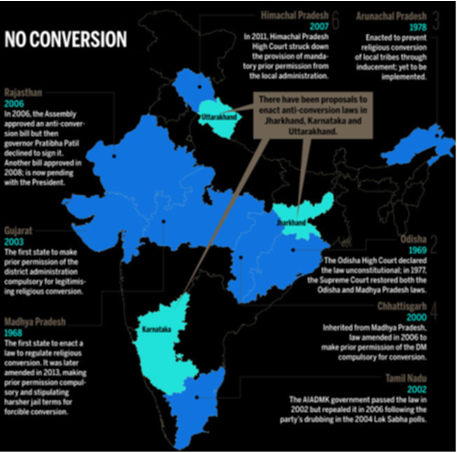
Major issues:
- While right to profess and practise their religion should be allowed, it should not become tool to political warfare.
- Fundamental right to propagate does not necessarily mean seeking converts by force of arms and can probably work to remove the “misconceptions” in the minds of the people about other co-existing religions in this land of different faiths.
- Several states enacted or revised their anti-conversion laws, restricting religious conversions on the additional ground of marriage, supposedly to curb what has been described as “love jihad”.
Source: News Article: The Hindu
NASA’s Artemis 1 mission - Edukemy Current Affairs
Why in news?
- Recently, NASA’s Orion capsule splashed down in the Pacific Ocean marking the end of the inaugural Artemis 1 lunar mission exactly 50 years after Apollo’s final moon landing.

About Orion Spacecraft
- It is developed by NASA.
- Orion served as the exploration vehicle that carried the crew to space, provided emergency abort capability, sustained the crew during the space travel, and managed safe re-entry from deep space return velocities.
- In its 35-day mission, the Orion passed about 127 km above the moon in a fly-by. Orion entered Earth’s atmosphere at a speed of over 40,000 kilometres per hour – more than 30 times the speed of sound – for a “fiery, 20-minute plunge to the ocean.”
How is Artemis 1 different from NASA’s earlier lunar missions?
- The Moon landings of the 1960s and 1970s were guided by Cold War geo-political considerations
- The desire of the United States to go one up on the Soviet Union —by launching the first satellite, Sputnik, and the first spacecraft, Luna 2, to crash on to the lunar surface, and sending the first man to space, cosmonaut Yuri Gagarin.
About Artemis 2 and 3
- Artemis 2 is planned for 2024 and it will take a crew toward the Moon but still without landing on it. NASA is expected to name the astronauts selected for this trip soon.
- Artemis 3, scheduled for 2025, will see a spacecraft land for the first time on the south pole of the Moon, which features water in the form of ice.
Source : News Article: The Indian Express
National and State Parties - Edukemy Current Affairs
Context: Recently, AAP became 9th National Party after winning more than 13% of votes in Gujrat Elections.
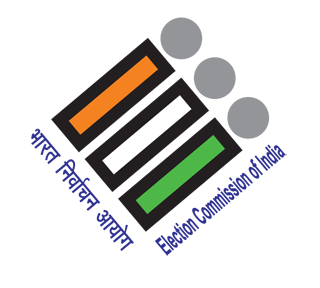
As per the ECI’s Political Parties and Election Symbols, 2019 handbook, a political party would be considered a national party if:
- it is ‘recognised’ in four or more states; or
- if its candidates polled at least 6% of total valid votes in any four or more states in the last Lok Sabha or Assembly elections and have at least four MPs in the last Lok Sabha polls; or
- if it has won at least 2% of the total seats in the Lok Sabha from not less than three states.
To be recognised as a state party, a party needs:
- at least 6% vote-share in the last Assembly election and have at least 2 MLAs; or
- have 6% vote-share in the last Lok Sabha elections from that state and at least one MP from that state; or
- at least 3% of the total number of seats or three seats, whichever is more, in the last Assembly elections; or
- at least one MP for every 25 members or any fraction allotted to the state in the Lok Sabha; or
- have at least 8% of the total valid votes in the last Assembly election or Lok Sabha election from the state.
Source: News Article: The Hindu
Image Source: ECI
IUCN Status for three Himalayan Medicinal Plants
Context: Recently three Himalayan medicinal plants entered IUCN Red List.
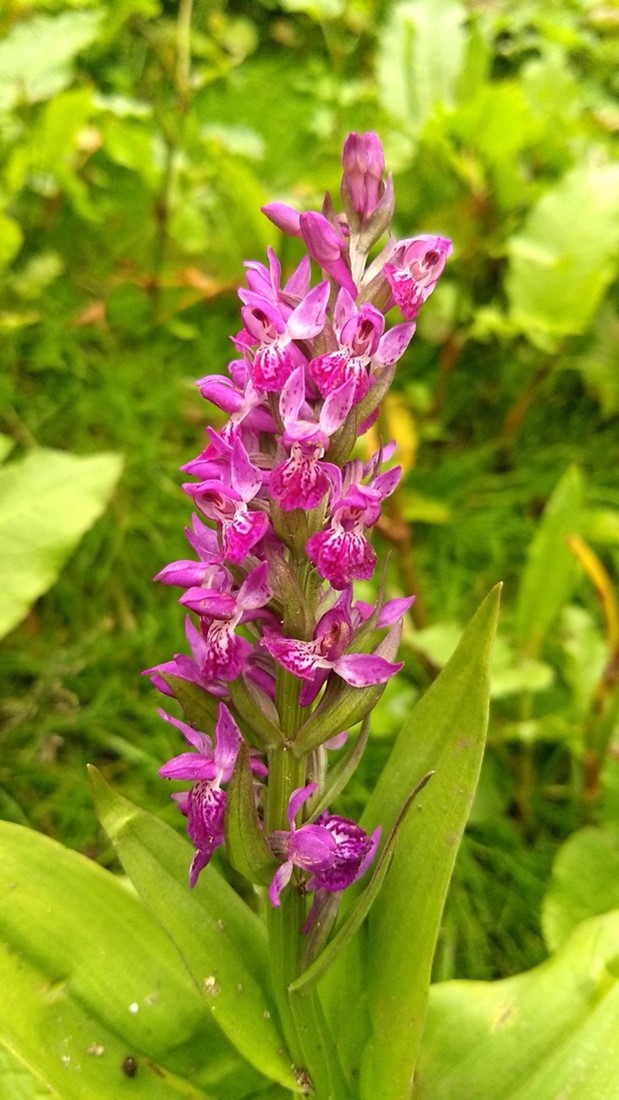
Meizotropis pellita or commonly known as Patwa
- A perennial shrub, endemic to Uttarakhand (restricted distribution).
- Declared ‘critically endangered’ based on its limited area of occupancy.
- Uses: the leaves possess strong antioxidant and is used in pharmaceutical industries.
- Threats: deforestation, habitat fragmentation and forest fires.
Fritillaria cirrhosa (Himalayan fritillary)
- A perennial bulbous herb.
- Listed as ‘vulnerable’
- Key observations and threats: 30 % rate of decline, long generation length, poor germination potential, high trade value, extensive harvesting pressure and illegal trade
- In China, the species is used for the treatment of bronchial disorders and pneumonia.
Dactylorhiza hatagirea (Salampanja)
- A perennial tuberous species endemic to the Hindu Kush and Himalayan ranges of Afghanistan, Bhutan, China, India, Nepal, and Pakistan.
- It is extensively used in Ayurveda, Siddha, Unani and other alternative systems of medicine to cure dysentery, gastritis, chronic fever, cough and stomach aches.
- Threats: habitat loss, livestock grazing, deforestation, and climate change.
Source: News Article: The Hindu
Air-breathing Engine - Edukemy Current Affairs
Context: Recently, ISRO successfully conducted the hot test of Scramjet Engine, a type of Air Breathing Engine.

- Air Breathing Engines is an engine in which fuel is burnt taking in air from the surrounding area.
- It is an internal combustion engine that directly heats the air by burning fuel, with the resultant hot gases used for propulsion via a propulsive nozzle. This is why they are lighter than rockets.
- A continuous stream of air flows through them. The air is compressed, mixed with fuel, ignited and expelled as the exhaust gas.
- Thrust produced by a typical air-breathing engine is about eight times greater than its weight.
- The thrust results from the expulsion of the working gases from the exhaust nozzle.
- They can be used instead of the expensive first stage of the chemical rocket launcher.
- Types:
- Ramjet
- Scramjet
- Dual Mode Ramjet (DMRJ)
- India is the fourth country to demonstrate the flight testing of a Scramjet Engine.
Source:
Image Source:
http://antariksh-space.blogspot.com/2014/07/isro-air-breathing-propulsion-cfd.html
Foundation of New Capital of India
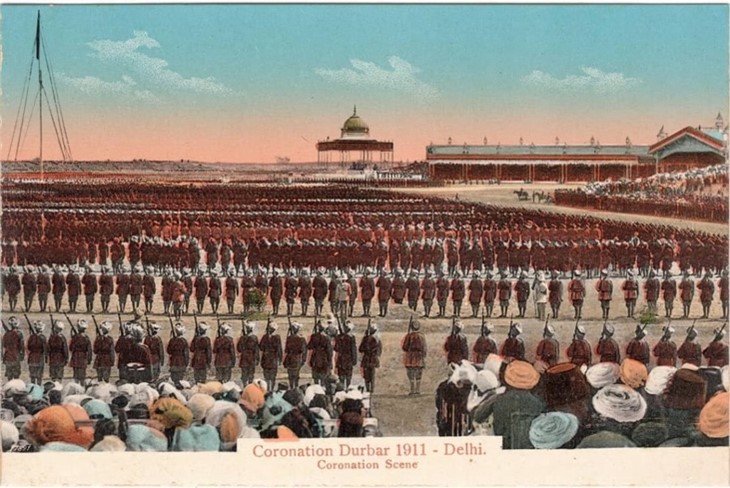
Context: 2nd December marks the 110th Anniversary of the foundation of Delhi as the new capital of India from Calcutta.
- Delhi Durbar was organised thrice: 1887, 1903 and
- The event marked the coronation of King George V as the King Emperor of India.
- Lord Hardinge was the then Viceroy
- Historical Background: Due to the announcement of the Partition of Bengal in 1905, Calcutta became grounds for nationalism and became less hospitable. Moreover, political assassinations took place in Calcutta.
- Other reasons:
-
- For better administration of the country.
- Delhi was the financial and political capital of many empires.
- Delhi is the northern part of the country whereas Calcutta is in the eastern coastal
- From 3000 BC to 17th AD, Delhi was supposed to be a site of 7 cities.
- There were 14 walled gates that protected Delhi, including Ajmeri Gate, Kashmiri Gate, Lahori Gate, Delhi Gate and Turkman Gate.
It was in 1931 that Delhi as the new capital was ready to accommodate the British.
Source: News Article: The Times of India
Image Source: The Heritage Lab
High use of subsidised fertilisers raises crop yield fears
Why in news?
- For A long time, India’s fertiliser sector has been riddled with distortions from excessive use of urea. But now, second fertiliser: di-ammonium phosphate or DAP, that is seeing a similar phenomenon of over-application due to underpricing.
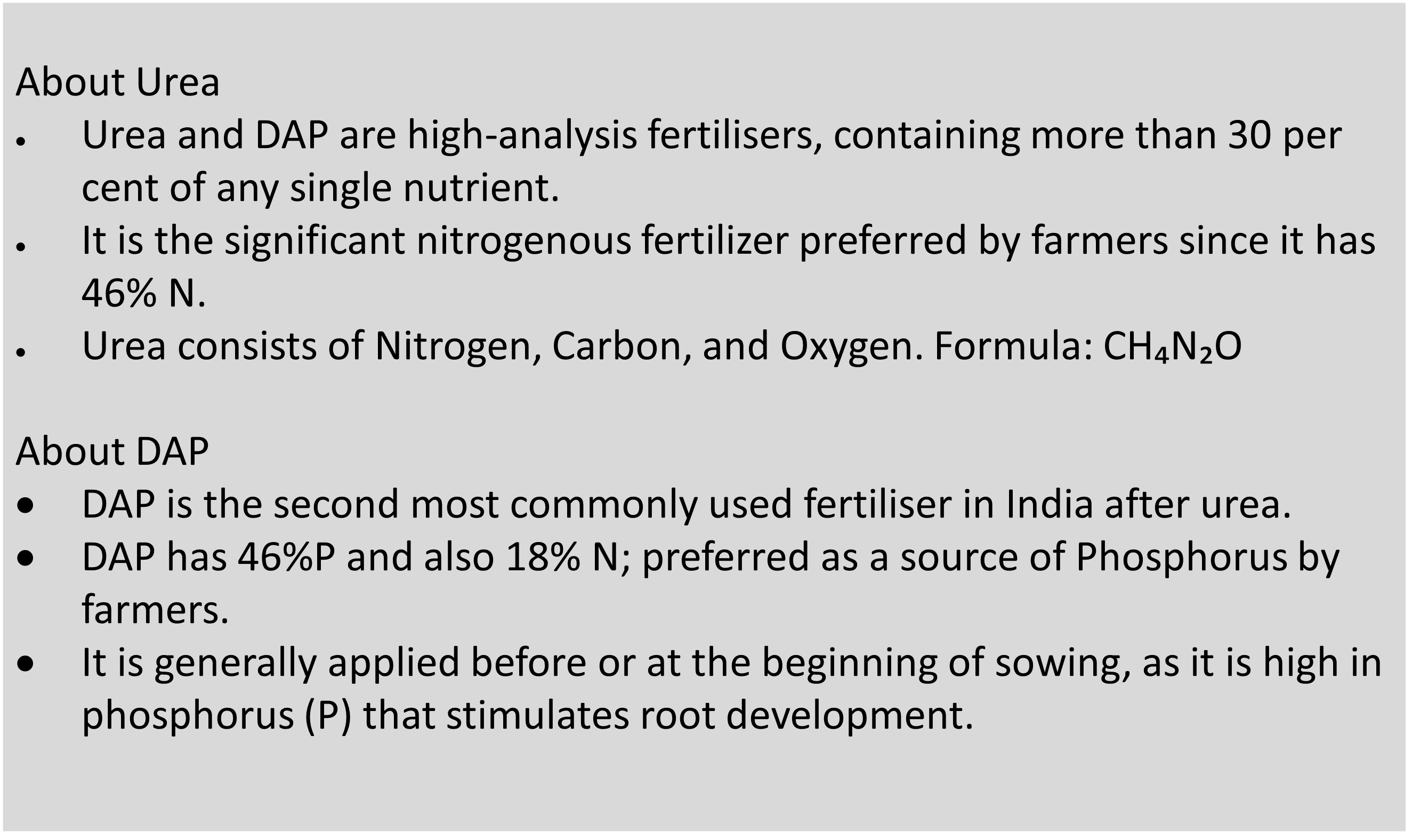
Reasons behind increased usage
- High government subsidies are behind the low pricing, and high sales, of these two fertilisers.
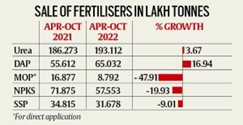
Source: News Article: The Indian Express
Goa gets 2nd airport - Edukemy Current Affairs
Why in News?
- Recently, Prime Minister inaugurated Goa’s second airport, about 35km from Panjim city and having an annual passenger handling capacity of 4.4 million.
Features
- Has a 3,500-metre runway
- Built on the theme of sustainable infrastructure and comprises a solar power plant, green buildings, LED lights on the runway, rainwater harvesting, state-of-the-art sewage treatment plant with recycling facilities, etc.
- Some of the features of the airport include a runway capable of handling the world’s largest aircrafts such as the Airbus A380, 14 parking bays along with a night parking facility for aircrafts, self-baggage drop facilities, state of the art and independent air navigation infrastructure, among others.
- It currently has 12 aircraft stands — five with passenger boarding bridges and seven remote parking bays.
- Goa will become the first Indian city-state to have two airports for scheduled commercial flights when Mopa gets operational from January 5, and the existing Dabolim airport will also remain open for passenger flights.
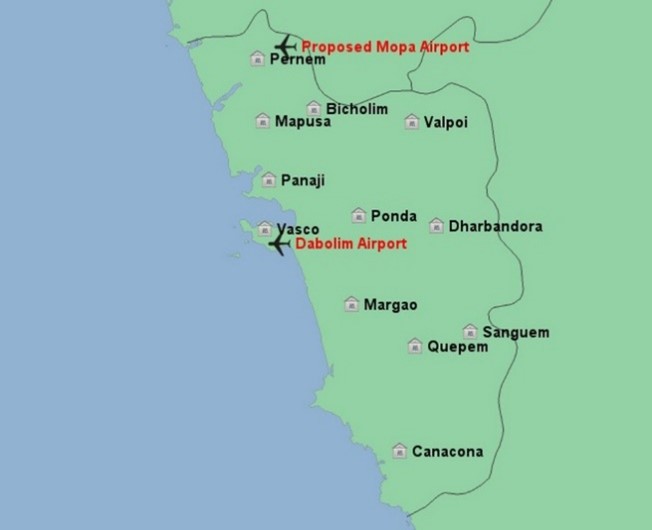
Source: News Article: The Indian Express
One District Two Products Scheme 2022
Why in News?
- Recently, Uttarakhand One District Two Products Scheme 2022 was launched to promote local products & generate self-employment opportunities.
About One District Two Products Scheme 2022
- The main objective of 1 District 2 Products Scheme is to commercially promote local products in each district; generate self-employment opportunities for locals and develop traditional and craft industries in all 13 districts of Uttarakhand by identifying the local products there.
Benefits of Uttarakhand 1 District 2 Products Scheme
- It will give a boost to the traditional and crafts industry.
- It will generate self-employment opportunities for local farmers and craftsmen.
- It will also give international recognition to local products of Uttarakhand.
Source: Sarkari Yojana
Ajinomoto - Edukemy Current Affairs
Why in News?
- The Delhi High Court recently halted the release of a film titled ‘Ajinomoto’, after a Japan-based seasoning manufacturer claimed infringement of its 113-year-old registered trademark ‘AJI-NO-MOTO’, which is primarily used for its product, monosodium glutamate.
About Ajinomoto
- MSG (Monosodium Glutamate) is the sodium salt of glutamic acid. It is also known as Sodium Glutamate.
- It was first prepared by Japanese biochemist Kikunae Ikeda in 1908.
- It is naturally found in some foods such as cheese, tomato, etc.
- It is used as a flavour enhancer while cooking.
Concerns
- MSG can result into headaches and a feeling of discomfort known as “Chinese Restaurant Syndrome.”
Source: News Article: The Indian Express
Hornbills - Edukemy Current Affairs
Why in News?
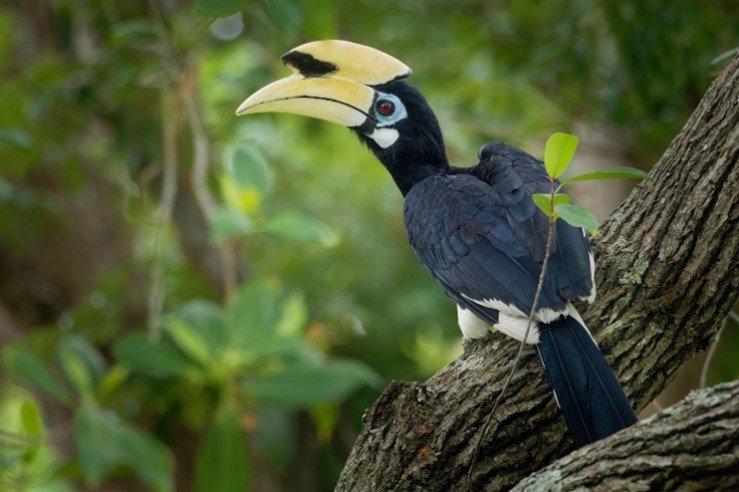
- The logo for India’s upcoming G20 presidency was officially unveiled recently at the Hornbill festival in Nagaland.
- The Great Hornbill (Bucerotidae): Family of birds found in the Himalayan foothills, the Northeast and the Western Ghats.
- State Bird: Of Arunachal Pradesh and Kerala.
- India is home to nine species of hornbills.The northeastern region has the highest diversity of hornbill species within India.
- Cultural symbols of some ethnic communities in the northeast, specifically theNyishi of Arunachal Pradesh.
- Referred to as ‘forest engineers’ or ‘farmers of forest’ as they play a significant role in seed dispersal of tropical treesand indicate the prosperity and balance of the forest they build nests in.
- IUCN Status: 26 out of the 62 species (40%) of hornbills: are Globally Threatenedor Near Threatened with extinction, with all other species listed as Least Concern.
- Wildlife Protection Act, 1972: Schedule I.
Source: News Article: The Hindu
New Drug for Alzheimers - Edukemy Current Affairs
Why in News?
- Lecanemab, jointly developed by pharma companies Biogen and Eisai, was tested on patients with early Alzheimer’s.
About Alzheimer’s

- It is a neurological disorder resulting in the degeneration or death of brain cells.
- It is the most common cause of dementiaamong older adults.
Symptoms:
- Loss of memory, problems with speaking or writing words, poor judgment, changes in mood and personality, confusion with time or place, etc.
- The symptoms are mild at the initial stage, but become severe with time.
Treatment:
- Incurable; since the death of brain cells is irreversible.
- Women are more prone to the disease as compared to men.
- Treatment addresses several areas:
- Helping people maintain brain health.
- Managing behavioural symptoms.
- Slowing or delaying symptoms of the disease.
Source: News Article: The Hindu
First woman Indian Olympic Association chief: PT Usha
Background
Former Indian athlete PT Usha, also known as “The Payyoli Express”, became the new chief of Indian Olympic Association (IOA), as well as its first woman president.
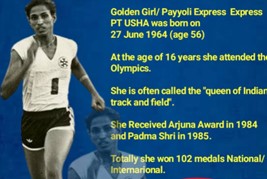
About P.T.Usha:
- She became the youngest sprinter (16 years) to represent India at the international stage for track and field athletics in the 1980 Moscow Olympics.
- She ran 400m hurdles in LA Olympics and missed out on a bronze medal by one-hundredth of a second. Overall, P T Usha won 23 medals, in the Asian track and field events from the 1980s, out of which 14 were gold.
- Later, she became active as a coach and member of sports administration. Drawing from her own experiences and the challenges with the lack of facilities and exposure, she opened the Usha School of Athletics.
- She was nominated as a Rajya Sabha MP in 2022 by the central government.
What is the expectation from P.T.Usha as a new chief of IOA?
- PT Usha, being the first Olympian and international medalist to head the IOA, is expected to revive IOA which has been plagued with neglect, nepotism and corruption.
- She has been vocal about political interference in sporting bodies, including IOA, which has led to the athletes’ issues taking the backseat.
- She routinely talked about the state of Indian sports administration, and how the lack of scouting, grooming and talent management has led to India’s historically disappointing show at the Olympics.
Source: News Article: The Indian Express
Share the article
Get Latest Updates on Offers, Event dates, and free Mentorship sessions.

Get in touch with our Expert Academic Counsellors 👋
FAQs
UPSC Daily Current Affairs focuses on learning current events on a daily basis. An aspirant needs to study regular and updated information about current events, news, and relevant topics that are important for UPSC aspirants. It covers national and international affairs, government policies, socio-economic issues, science and technology advancements, and more.
UPSC Daily Current Affairs provides aspirants with a concise and comprehensive overview of the latest happenings and developments across various fields. It helps aspirants stay updated with current affairs and provides them with valuable insights and analysis, which are essential for answering questions in the UPSC examinations. It enhances their knowledge, analytical skills, and ability to connect current affairs with the UPSC syllabus.
UPSC Daily Current Affairs covers a wide range of topics, including politics, economics, science and technology, environment, social issues, governance, international relations, and more. It offers news summaries, in-depth analyses, editorials, opinion pieces, and relevant study materials. It also provides practice questions and quizzes to help aspirants test their understanding of current affairs.
Edukemy's UPSC Daily Current Affairs can be accessed through:
- UPSC Daily Current Affairs can be accessed through Current Affairs tab at the top of the Main Page of Edukemy.
- Edukemy Mobile app: The Daily Current Affairs can also be access through Edukemy Mobile App.
- Social media: Follow Edukemy’s official social media accounts or pages that provide UPSC Daily Current Affairs updates, including Facebook, Twitter, or Telegram channels.



